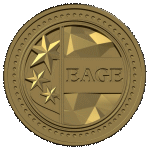The European Union is unique. It is not a federal state like the USA because its member countries remain independent sovereign nations. Nor is it a purely intergovernmental organisation like the United Nations because the 28 member countries do pool some of their sovereignty, and thus gain much greater collective strength and influence than they could have acting individually. Whether located in the EU or not, EAGE’s members, communities and related business partners working in the Oil and Gas and Near Surface area are often directly or indirectly affected by the EU policies. As one of the largest economies of the world, the EU also offers a myriad of opportunities for businesses, science institutions, and non-profit organisations.
As a worldwide association for the community of Geosciences and Related Engineering areas, EAGE strives to provide a wide range of services. To expand on the existing services, EAGE has created an office for ‘EU Public Affairs’. The office of EU Affairs strives to communicate the science and knowledge of our expert community to policy makers, thus influencing and facilitating evidence-based policy. At the same time, we want to keep our community informed of opportunities, policy changes, and other relevant developments that come out of the EU institutions.
EAGE and EU Affairs
In short, the main objectives of the EAGE EU Public Affairs office are:
- exploring opportunities in the EU Public Affairs arena
- establishing a bridge between the scientific expertise in our community and the policy makers of the EU
- informing our community of relevant developments in the EU arena
- actively engaging in several policy areas and opportunities e.g. Erasmus+, Horizon 2020, evidence based policy
- creating EAGE profile and establishing a network in Brussels

